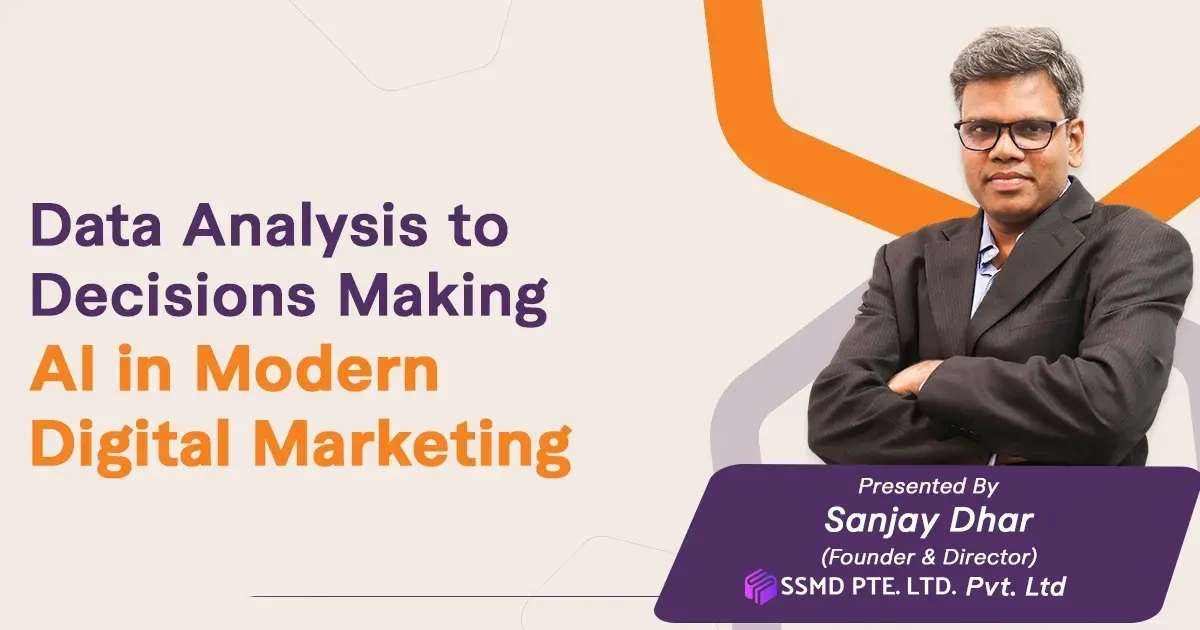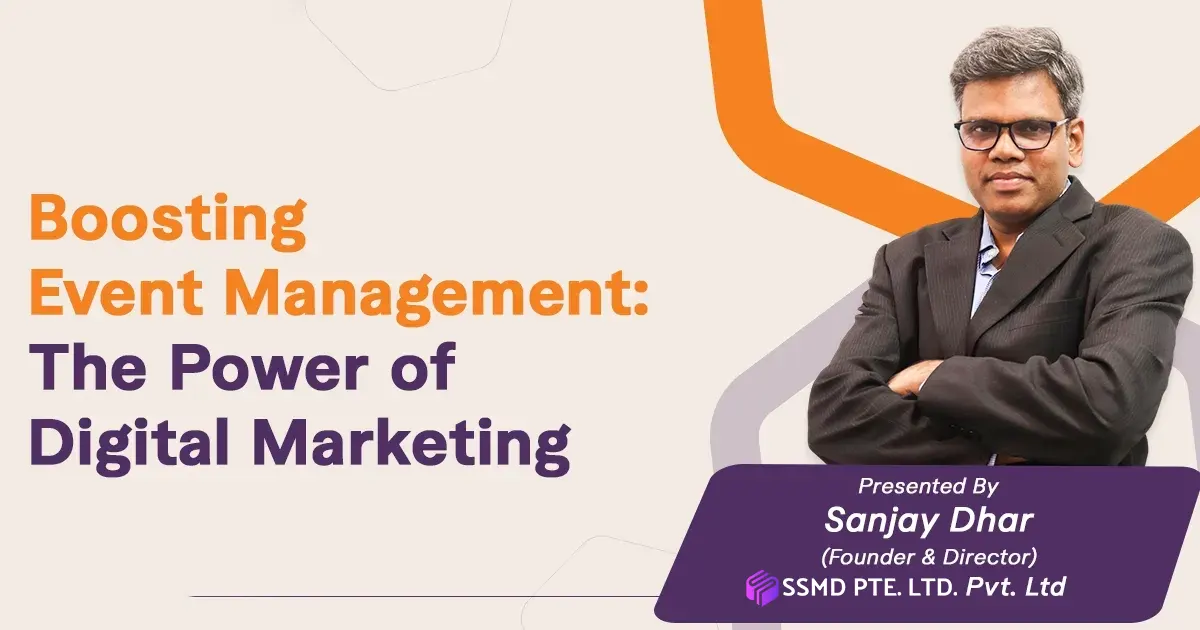Top 15 SSMD Marketing Action Plans for Educational Institutes in this Year
Technology is the primary tool that propels human society ahead. In terms of technical progress, we have reached a point where limitless possibilities now surround us. Several new types of occupations have been created for technological advancements that were not even possible a few years ago.
In the process, even the nature of higher education has changed. Employees must have certain specialized skill sets, which can only be provided by educational institutions, to balance the newly created jobs. Millions of students strive to fulfill these new career responsibilities, and universities, colleges, and educational institutions offer new, inspiring, innovative, and relevant courses.
Because of the rising scope of technology and the newer skill sets that it necessitates, higher education courses have adjusted their emphasis to be more practical, industry-relevant, employment-oriented, and tailored to corporate needs.
Today, the educational degree is no longer location-specific. Many online courses are being developed to provide students with a high salary. It is good news for students, as education is becoming more vital. However, this has increased competition among higher education institutions to maximize student enrollment and provide the best educational services.
As a result, higher education institutions are turning to digital marketing agencies for help in developing an efficient strategy for communicating with potential students, parents, industry experts, and other stakeholders to establish a strong brand image.
SSMD marketing is growing more powerful and significant in persuading the target group in the present scenario when more and more individuals favor digital mediums over traditional ones. SSMD marketing courses are more relevant, particularly in the higher education sector, because students consume more Internet than any other group. Furthermore, digital marketing makes targeting and retargeting possible.
Students might be persuaded and encouraged to bond with your brand 24/7. As a result, here are 15 noteworthy digital marketing action plans to explore in 2021, all of which are expected to produce great results:

Top 15 SSMD Marketing Strategies for Educational Sector
1. Mobile Optimization
Mobile users have surpassed laptop users as the most common platform for accessing the internet, indicating that mobile is the most popular platform. Students are also big fans of mobile phones.
As a result, educational institutions must remember to make their websites mobile-friendly when designing their websites. Higher education’s first and most important strategy is mobile optimization. You will miss out on many potential students if your website does not support mobile devices.
2. Technical SEO
Nowadays, SEO is not only about keywords and phrases. Google Analytics is continuously changing, and only the most technically sound websites will appear at the top of the search results.
It means that even if your web pages are perfectly language optimized, you still cannot escape the possibility of not being listed in the top search results if your website is riddled with technical errors like 404 errors, broken/missing XML sitemaps, slow page loading times, reproduced content, irrelevant content, and so on.
However, you may need a web developer’s help to optimize your webpage technically. Technical SEO Service, on the other hand, is a technique that educational institutions cannot overlook.
3. Link Building Strategy
Link-building should be your primary consideration when developing an efficient SEO strategy for your educational institution. A web page’s quality is no longer just determined by its content. The amount of time a visitor spends on your website is determined by the number of relevant backlinks it contains.
Let your website have no backlinks. The user will then skim through the information on your website before moving on to another site for further info. When you include multiple backlinks to other related information on your website, however, user interest can be maintained much longer as they move through your website. So, incorporate a large number of backlinks on your webpage to engage and retain visitors.
4. Retargeting Campaigns
Retargeting is a slower but more consistent, more successful process than traditional targeting. Retargeting not only saves money but also increases conversion rates.
The main benefit of retargeting is that it allows you to contact prospective students who have expressed an interest in your educational services through numerous online channels. Retargeting is another fruitful approach for growing your target audience. You can start the campaign to raise brand awareness and then retarget prospective students who have expressed interest in your educational institution.
5. Managed Ad Placement
Managed Ad Placement is the technique of placing your PPC advertising on web pages relevant to your program. For example, if you want to promote your most recent online course on data management, it’s a good idea to post your ads on a data education website that’s more likely to be visited by a potential student for that course.
You can also place advertisements on websites dedicated to higher education and career advancement. In this manner, managed ad placement not only helps to control marketing budgets but also helps to target the most relevant prospects efficiently.
6. On-page SEO
SEO is a necessary component of any effective digital marketing campaign. After all, SEO improves your brand’s visibility on search engines, which is where most users conduct their searches.
So, make sure your website’s content is search engine friendly. Affluent title tags, proper meta descriptions, optimum keyword density, enhanced headers, internal links, and other criteria must all be considered.
7. Conversion Oriented Content
The ideal conversion rate must first be determined based on your business objectives. It aids in the creation of high-quality content aimed at increasing conversion rates. By nature, conversion-oriented content is aimed toward potential students in the sales funnel.
Conversion-oriented content can be created by giving data about your institution, such as amenities, infrastructure, campus facilities, faculty bios, placement records, fees structure, and so on, to urge students to connect with you.
8. Traffic Oriented Content
Language isn’t the only factor to consider when creating quality content in a successful digital marketing strategy. Nowadays, the quality of content is assessed by its ability to increase traffic as well as page ranking. As a result, make sure your content is geared towards generating more traffic and improving rankings. It can be accomplished by conducting keyword research with a particular emphasis on long-tail variations of core keywords.
Keyword clusters are highly beneficial to streamlining your content and identifying various other areas relating to your keywords. As a result, the quality of information supplied through content will improve as well.
9. Social Sharing Oriented Content
Social signals form a significant share of the Google algorithm in determining page rankings. They refer to a webpage’s total number of shares, comments, and likes. In other words, search engines use social signals to determine the popularity of a webpage.
According to the most recent Google Analytics, social signals have an impact on a web page’s organic search ranking. As a result, when creating content for your educational institution, keep in mind that the content should encourage social media sharing, likes, and comments, among other things. Your content must entice your audience to talk about it and share it.
10. Stakeholder Networking
To improve the effectiveness of your webpage, you’ll need input from a variety of higher education stakeholders, including professors, current students, alumni, industry professionals, parents, and so on. Interacting with professors, for example, will provide you with an understanding of study fields.
You will learn more about job prospects by connecting with industry leaders. You can understand the distinctiveness of your institution and how it has helped alumni carve out a career path by speaking with alumni. You can learn about the expectations of parents and potential students by talking with them. As a result, it provides you with a 360-degree understanding of a higher education institution, which you can use to design the most effective digital marketing approach.

11. Fruitful Pitch Writing
For higher education institutions, pitch writing must be integral to their public relations strategy. It refers to the emails or letters you send to editors and journalists to demonstrate your brand’s uniqueness.
Pitch writing must be done creatively to portray your brand from a unique perspective. Pitch writing not only raises brand awareness but also aids in the development of a positive industry reputation. You can also encourage your stakeholders, such as students, alumni, parents, faculty, and corporate professionals, to write pitches.
12. Gain Media Attention
It is possibly the most efficient method for writing brand pitches. You must critically grasp the newest trends in the higher education sector to stay on top of the news. Staying up to date on the latest news and acting on it will help you stay ahead of the competition in your endeavors.
For example, if you keep an eye on the latest developments in higher education and encourage your faculty to articulate their thoughts in a pitch, you’ll be able to utilize your faculty’s knowledge and attract media and industry attention.
13. Identify Your Platform
You must find the most relevant social media platforms where your potential students are highly active when establishing a successful social media strategy. Facebook, Instagram, and Twitter are students’ three most popular social media platforms.
After you’ve decided on the platforms where you’ll run your campaign, the next step is to learn about the algorithms of those platforms. For example, the latest algorithm of Facebook prioritizes the posts of a user’s family and friends. Similarly, on Instagram, it is visuals-first and eye-popping graphics. On Twitter, it’s all about short, informative content. As a result, you must determine the most popular hashtags for higher education and include them in your postings.
14. Make Live Video
Live video is a prevalent and dominant algorithm on all major social media platforms. On social media, this trend is very popular among students. As a result, live streaming can be used to its full potential in attracting prospective students’ attention.
One such strategy is hosting a live Q&A session to answer questions about the application and admission process, fee structure, learning amenities and opportunities, and so on. You might ask your faculty, students, and alumni to share their perspectives and interact with prospects to give students a better feel of your institution and the courses available.
15. Engage 24/7 With Chatbots
Chatbots are revolutionizing how we communicate on the internet. Chatbots are reducing the waste of time and speeding up our actions. Chatbots can be used efficiently as part of an educational institution’s digital strategy.
Chatbots, for example, can instantly respond to student questions and expedite the admissions process. Chatbots are becoming increasingly popular on social media, and having an exclusive chatbot for your institution can help you promote yourself as a tech-savvy and forward-thinking educational institution.
The above-mentioned strategies are divided into five categories: technical, ad campaigns, content development, user engagement, and public relations. It will also assist you in prioritizing your budget and identifying areas of weakness. A professional digital marketing agency for educational institutes can help you. Mobile optimization, technical SEO, and link building can be considered strategies of a technical nature.
Retargeting and Managed Placement can also be a part of your Ad campaigns. Conversion-oriented Oriented Content, On-page SEO, Traffic Oriented Content, and Social Sharing Oriented Content can be bucketed as an element of content marketing strategy. Stakeholder Networking, Pitch Writing, and Media Relations can be a part of your PR strategy. Social Media Management, Live Streaming, and Chatbots can be a part of your User Engagement Strategy.
Completion is arising in all sectors and industries, and higher education is not an exception. In a world ruled by data, it’s become essential to boost your reputation and exposure while competing against an ever-increasing number of competitors.
In this regard, these fifteen digital marketing strategies for the the educational sector will help you portray your education brand to potential students in the best possible light. The tactics stated above are vital for 2021, and we will see major higher education stakeholders putting them into action in the coming days.
SSMD Pte Ltd,, July 29, 2021















